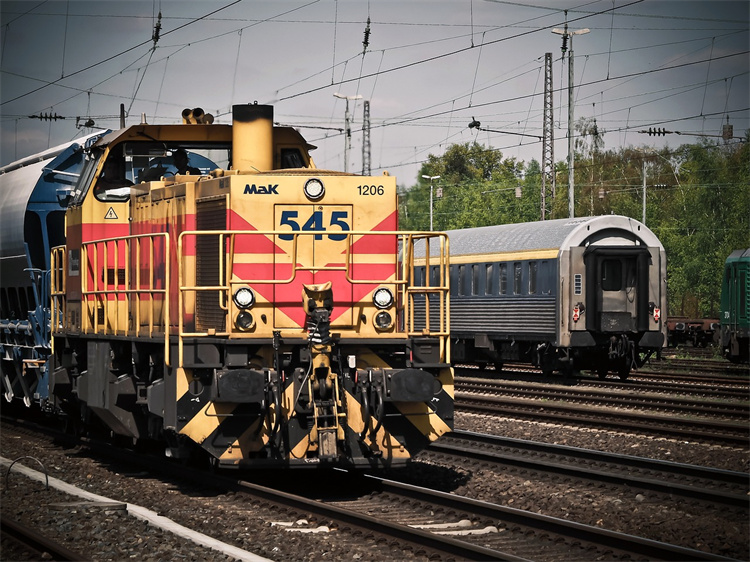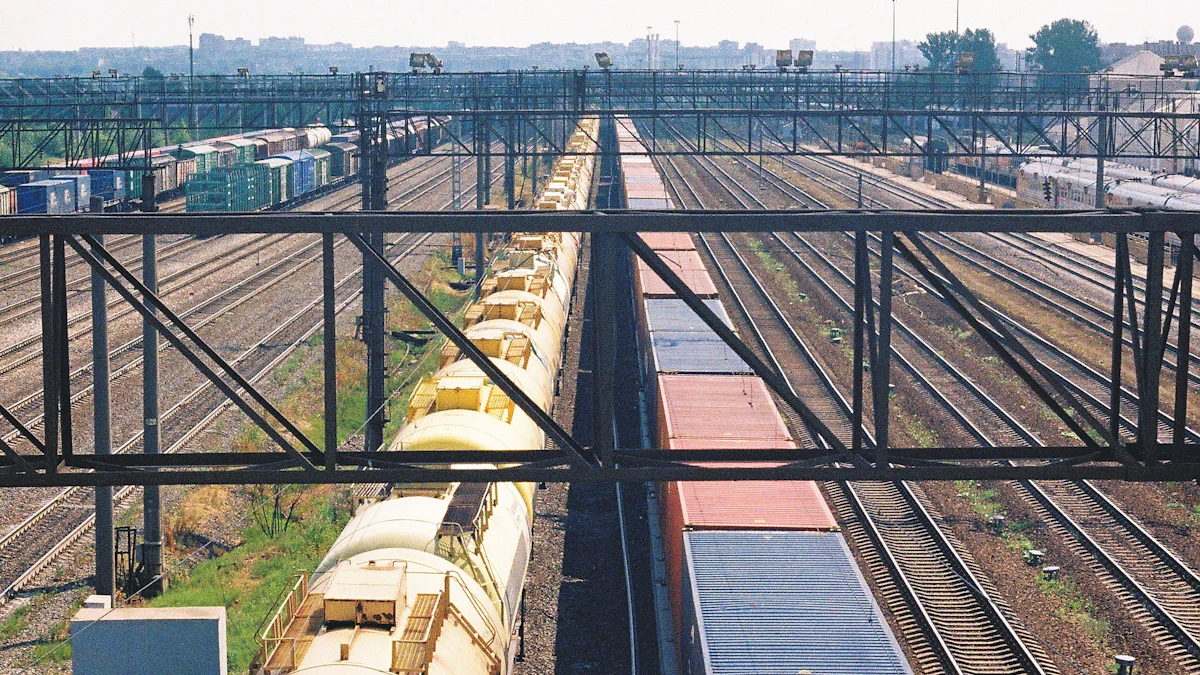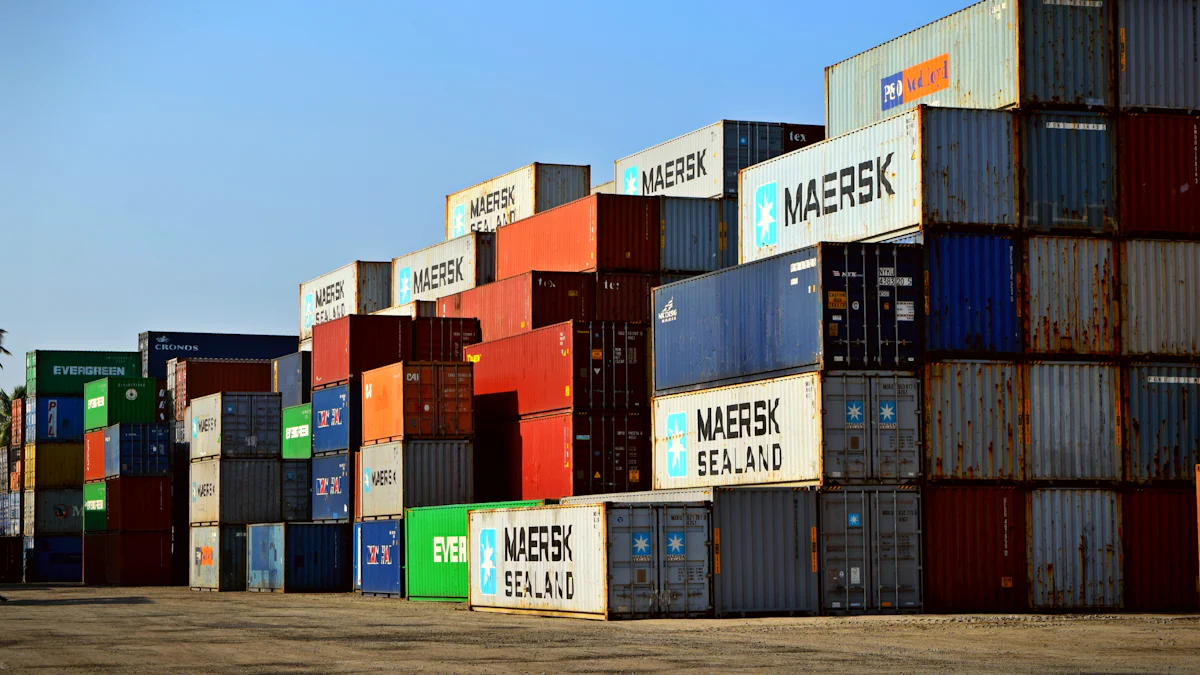Analyzing the Global Trade Shift Due to China-Europe Railway Express

The China-Europe Railway Express has revolutionized global trade by offering a faster and more reliable alternative to traditional shipping methods. This railway network, a key component of the Belt and Road Initiative, connects over 223 cities in Europe and more than 100 in Asia, facilitating international trade across 25 countries. The opening of CR-Express has significantly impacted international trade patterns, with freight volumes increasing dramatically. In 2023 alone, the railway transported approximately 1.9 million TEUs, highlighting its capacity to handle large-scale freight. This evolution in logistics has bolstered economic growth in cities along its routes, enhancing the economic impact of CR-Express.
Key Takeaways
The China-Europe Railway Express offers a faster and more reliable alternative to traditional shipping, reducing transit times to just 15-20 days.
By diversifying trade routes, the railway enhances supply chain resilience, allowing businesses to mitigate risks associated with geopolitical tensions and maritime disruptions.
The railway's integration with existing logistics networks boosts economic growth in cities along its routes, creating logistics hubs and job opportunities.
Industries such as electronics and FMCG benefit significantly from the railway's efficiency, enabling timely deliveries and cost-effective solutions.
Future expansions and innovations in rail technology are essential for increasing capacity and sustainability, aligning with global economic and environmental goals.
JUSDA's role in optimizing the China-Europe Railway Express enhances logistics efficiency, providing clients with advanced tracking and coordination solutions.
Overview of the China-Europe Railway Express

The China-Europe Railway Express has become a pivotal component in the global logistics landscape, offering a robust alternative to traditional shipping methods. This section delves into the intricate network of routes and the operational efficiency that defines this railway system.
Routes and Connectivity
Key routes and their strategic importance
The China-Europe freight routes form a vast network connecting major cities across China and Europe. These routes serve as vital arteries for international trade, facilitating the movement of goods between two of the world's largest economies. The Chongqing-Xinjiang-Europe and Wuhan-Xinjiang-Europe railways stand out as key corridors, linking industrial hubs in China with economic centers in Europe. These routes not only enhance connectivity but also play a strategic role in the Belt and Road Initiative, promoting economic integration and cooperation.
Recent developments and expansions
Recent expansions have further solidified the China-Europe freight routes as a cornerstone of international logistics. New routes, such as the southern corridor via Baku-Tbilisi-Kars, have been introduced to improve connectivity and efficiency. These developments reflect the ongoing evolution of China-Europe freight routes, which continue to adapt to the demands of international trade. The opening of CR-Express has catalyzed these changes, leading to increased freight volumes and a more resilient supply chain.
Operational Efficiency
Speed and cost advantages over sea freight
The China-Europe Railway Express offers significant advantages over traditional sea freight. It provides faster transit times, reducing the journey from China to Europe to just 15-20 days. This speed advantage makes it an attractive option for businesses seeking to optimize their supply chains. Additionally, the railway is more cost-effective than air freight, offering a balanced solution between speed and cost. This efficiency has had a profound impact on the logistics industry efficiency, enabling companies to reduce costs while maintaining timely deliveries.
Integration with existing logistics networks
The China Railway Express seamlessly integrates with existing logistics networks, enhancing the overall logistics industry efficiency. By connecting with established rail and road systems, the railway ensures smooth transitions and minimizes delays. This integration supports the economic growth of cities along its routes, fostering the development of logistics hubs and boosting local economies. The impact of CR-Express extends beyond transportation, influencing the broader economic landscape by promoting regional development and cross-border collaboration.
Impact on International Freight Forwarding and Global Supply Chains
Stabilizing Trade Amid Geopolitical Tensions
The China-Europe Railway Express plays a crucial role in stabilizing trade amid geopolitical tensions. By providing a reliable and consistent service, it mitigates risks associated with maritime routes. The railway's extensive network offers a direct land link between China and Europe, reducing travel time compared to sea routes. This diversification of trade routes ensures that businesses can maintain smooth operations even during periods of uncertainty. The China-Europe freight routes have become an essential component of resilient supply chains, enabling companies to navigate complex global markets effectively.
Diversification of trade routes
The China-Europe freight routes offer a strategic alternative to traditional shipping methods. These routes connect major cities across China and Europe, facilitating the movement of goods between two of the world's largest economies. By diversifying trade routes, the railway reduces dependency on maritime transport, which can be vulnerable to geopolitical disruptions. This diversification enhances the resilience of global supply chains, ensuring that businesses can continue to operate efficiently despite external challenges.
Mitigating risks associated with maritime routes
Maritime routes often face challenges such as geopolitical tensions and natural disasters. The China-Europe Railway Express provides a stable and reliable alternative, mitigating these risks. Its ability to offer consistent service makes it an attractive option for businesses seeking to minimize disruptions in their supply chains. By utilizing the railway, companies can maintain the flow of goods and ensure timely deliveries, even in the face of uncertainties.
Enhancements in Supply Chain Resilience
The China-Europe Railway Express significantly enhances supply chain resilience by improving reliability and predictability. Its efficient operations and strategic connectivity contribute to the overall logistics industry efficiency. The railway's integration with existing logistics networks ensures smooth transitions and minimizes delays, supporting the economic growth of cities along its routes.
Improved reliability and predictability
The China Railway Express offers improved reliability and predictability compared to other modes of transport. Its efficient operations reduce transit times and enhance the overall logistics industry efficiency. This reliability makes it a preferred choice for businesses looking to optimize their supply chains. By providing a dependable service, the railway supports the economic development of regions along its routes, fostering cross-border trade transport and bilateral trade facilitation.
Case studies of industries benefiting from the railway
Several industries have benefited from the China-Europe Railway Express. For instance, the electronics industry has seen significant improvements in supply chain efficiency due to the railway's fast and reliable service. The clothing and medical supply sectors have also experienced enhanced logistics operations, enabling them to meet market demands more effectively. These case studies highlight the positive impact of the development of the China-Europe Railway Express on various industries, showcasing its role in promoting international trade and economic growth.
Economic and Regional Development Effects

The China-Europe Railway Express has significantly influenced economic and regional development. This section explores how the railway has fostered city growth and innovation, as well as its impact on local economies.
City Development and Innovation
Growth of logistics hubs along the railway
The expansion of the China-Europe freight trains has led to the emergence of logistics hubs along its routes. These hubs have become vital centers for the logistics industry efficiency, facilitating the smooth movement of goods between China and Europe. The strategic placement of these hubs has enhanced the connectivity of the China-Europe freight routes, making them integral to the Belt and Road Initiative. As a result, cities along the railway have experienced significant growth, with improved infrastructure and increased economic activities.
Promotion of regional economic integration
The opening of CR-Express has promoted regional economic integration by connecting diverse markets across continents. This integration has strengthened economic and trade cooperation between China and Europe, fostering a collaborative environment for businesses. The impact of CR-Express extends beyond transportation, as it encourages innovation and development in regions along its path. By linking cities and facilitating international trade, the railway has become a catalyst for regional growth and prosperity.
Impact on Local Economies
Job creation and infrastructure development
The China Railway Express has played a crucial role in job creation and infrastructure development. The construction and operation of the railway have generated numerous employment opportunities, boosting local economies. The demand for skilled labor in logistics and transportation sectors has increased, providing stable jobs for many individuals. Additionally, the development of infrastructure, such as railways and logistics centers, has further stimulated economic growth in these regions.
Encouragement of cross-border trade and investment
The China–Europe Railway Express has encouraged cross-border trade and investment by providing a reliable and efficient transportation solution. Businesses now have access to new markets, enabling them to expand their operations and increase their competitiveness. The railway's ability to facilitate international trade has attracted investments in various sectors, contributing to the overall economic development of regions along its routes. This evolution in trade dynamics has reshaped the competitive landscape, offering new opportunities for growth and collaboration.
Challenges and Future Prospects
The China-Europe Railway Express has transformed global logistics, yet it faces several challenges that need addressing to ensure its continued success and growth. This section explores the operational and logistical hurdles, as well as the promising future prospects and opportunities for this vital trade route.
Operational and Logistical Challenges
Infrastructure limitations and bottlenecks
The China-Europe freight trains encounter infrastructure limitations that can hinder their efficiency. Many rail networks in both China and Europe require upgrades to handle increased freight volumes. Bottlenecks often occur at key transit points, slowing down the movement of goods. These limitations can undermine the logistics industry efficiency, affecting the overall competitiveness of the railway. Addressing these issues requires strategic investments in infrastructure to enhance capacity and streamline operations.
Regulatory and customs issues
Regulatory and customs challenges pose significant obstacles to the smooth operation of the China Railway Express. Differences in customs procedures across countries can lead to delays and increased costs. The need for harmonized regulations and efficient customs clearance processes is crucial for maintaining the railway's reliability. Strategic partnerships with major rail platforms can facilitate faster customs clearance, ensuring that the railway remains a competitive option for international trade.
Future Prospects and Opportunities
Potential for expansion and increased capacity
The China–Europe Railway Express holds immense potential for expansion. As demand for efficient international trade routes grows, increasing the railway's capacity becomes essential. Expanding existing routes and developing new ones can enhance connectivity and support the economic growth of regions along the railway. The opening of CR-Express has already demonstrated the positive impact of such expansions, paving the way for further development.
Innovations in rail technology and sustainability
Innovations in rail technology offer exciting opportunities for the China-Europe freight routes. Advancements in rail systems can improve speed, efficiency, and sustainability. Implementing eco-friendly technologies can reduce the railway's carbon footprint, aligning with global sustainability goals. These innovations not only enhance the logistics industry efficiency but also contribute to the broader economic and environmental objectives of the Belt and Road Initiative.
JUSDA's Role in the China-Europe Railway Express
JUSDA's China-Europe Express Rail
JUSDA has played a pivotal role in the success of the China-Europe Railway Express, a key component of the Belt and Road Initiative. By leveraging its expertise in logistics and supply chain management, JUSDA has optimized operations along the China-Europe freight routes. This optimization ensures that clients benefit from the best possible logistics solutions.
Unique features and advantages
The China-Europe Express Rail service offered by JUSDA stands out due to its unique features and advantages. JUSDA integrates advanced technologies such as AI and IoT to enhance real-time tracking and coordination. This integration ensures timely and secure delivery of goods, which is crucial for maintaining the logistics industry efficiency. Additionally, JUSDA actively develops solutions for return trip cargo transportation, maximizing the efficiency of the rail service. The company's strategic use of rail transport underscores its commitment to optimizing supply chain operations.
Integration with JUSDA's global logistics network
JUSDA's global network and multimodal logistics capabilities set it apart as a leader in supply chain management. The company seamlessly integrates the China-Europe Railway Express with its existing logistics network, enhancing the overall efficiency of the service. By connecting with established rail and road systems, JUSDA ensures smooth transitions and minimizes delays. This integration supports the economic growth of cities along the railway, fostering the development of logistics hubs and boosting local economies.
Impact on JUSDA's Clients
JUSDA's involvement in the China-Europe Railway Express has had a significant impact on its clients, particularly in industries that demand precision and reliability.
Case studies of successful implementations
Several case studies highlight the success of JUSDA's implementations. For instance, the electronics industry has benefited from the fast and reliable service provided by the China-Europe freight trains. The clothing and medical supply sectors have also experienced enhanced logistics operations, enabling them to meet market demands more effectively. These case studies demonstrate the positive impact of CR-Express on various industries, showcasing its role in promoting international trade and economic growth.
Benefits for industries like electronics and FMCG
Industries such as electronics and fast-moving consumer goods (FMCG) have reaped significant benefits from JUSDA's services. The China Railway Express offers faster transit times and cost-effective solutions, making it an attractive option for businesses seeking to optimize their supply chains. By choosing JUSDA, companies in these industries gain access to a partner dedicated to their success. The opening of CR-Express has facilitated the continuous import of electronic components and other products, bridging geographical and economic distances between regions.

JUSDA Solutions
To provide you with professional solutions and quotations.
The China-Europe Railway Express has reshaped global trade and regional development. Its efficient freight transport between China and Europe has bolstered international trade, aligning with the Belt and Road Initiative's goals. The opening of CR-Express has catalyzed economic growth, enhancing the impact of CR-Express on international markets. Future policies should focus on infrastructure investment and technological innovation to further enhance the railway's effectiveness. Research into the environmental impact of the China Railway Express can also guide sustainable practices, ensuring the evolution of this vital trade route continues to support economic progress.
See Also
Exploring How Global Trade Policies Affect Economies
Addressing Supply Chain Growth Issues in a Global Context
The Importance of Supply Chains in Global Trade
Transforming Supply Chain Management Through Big Data Analytics
